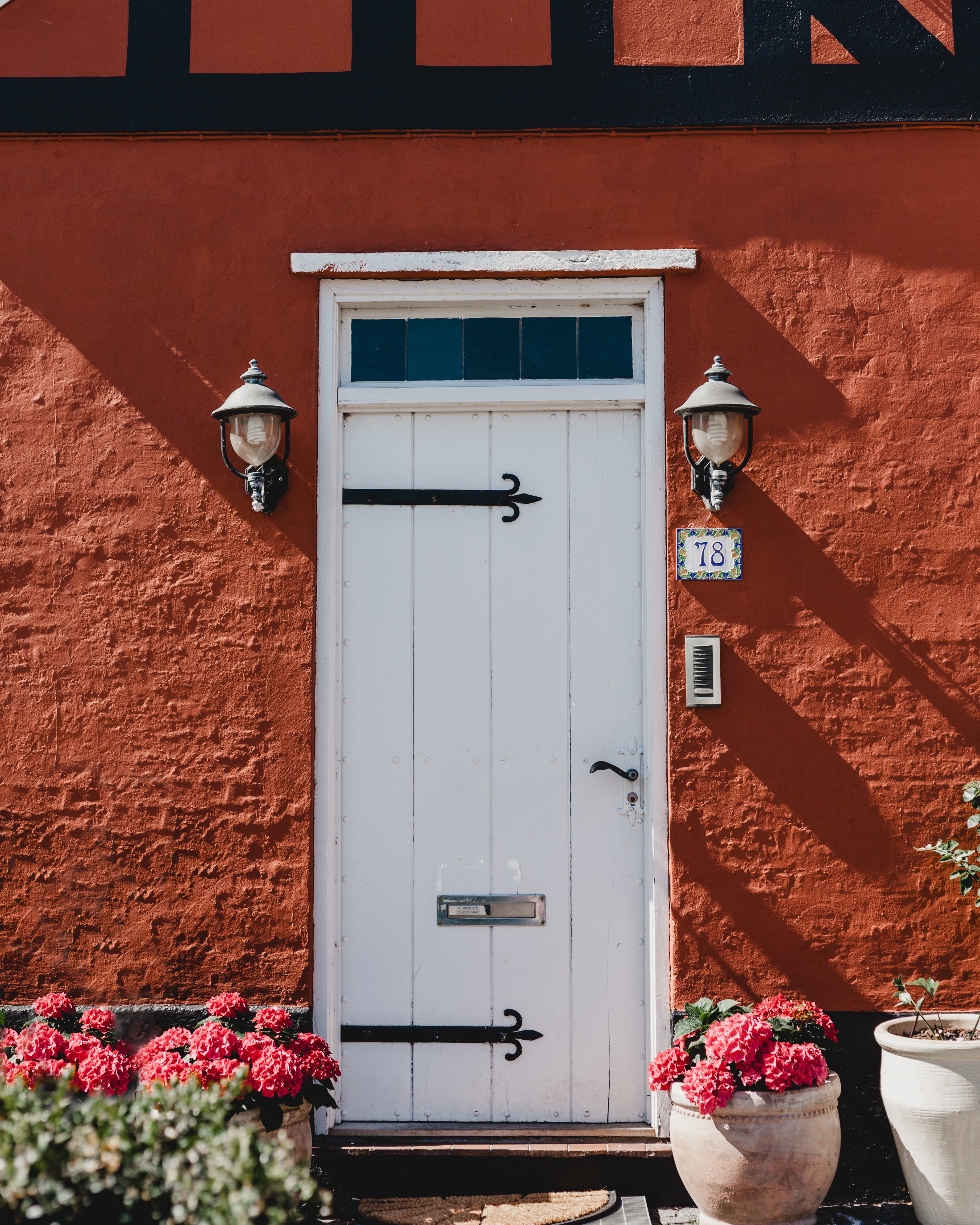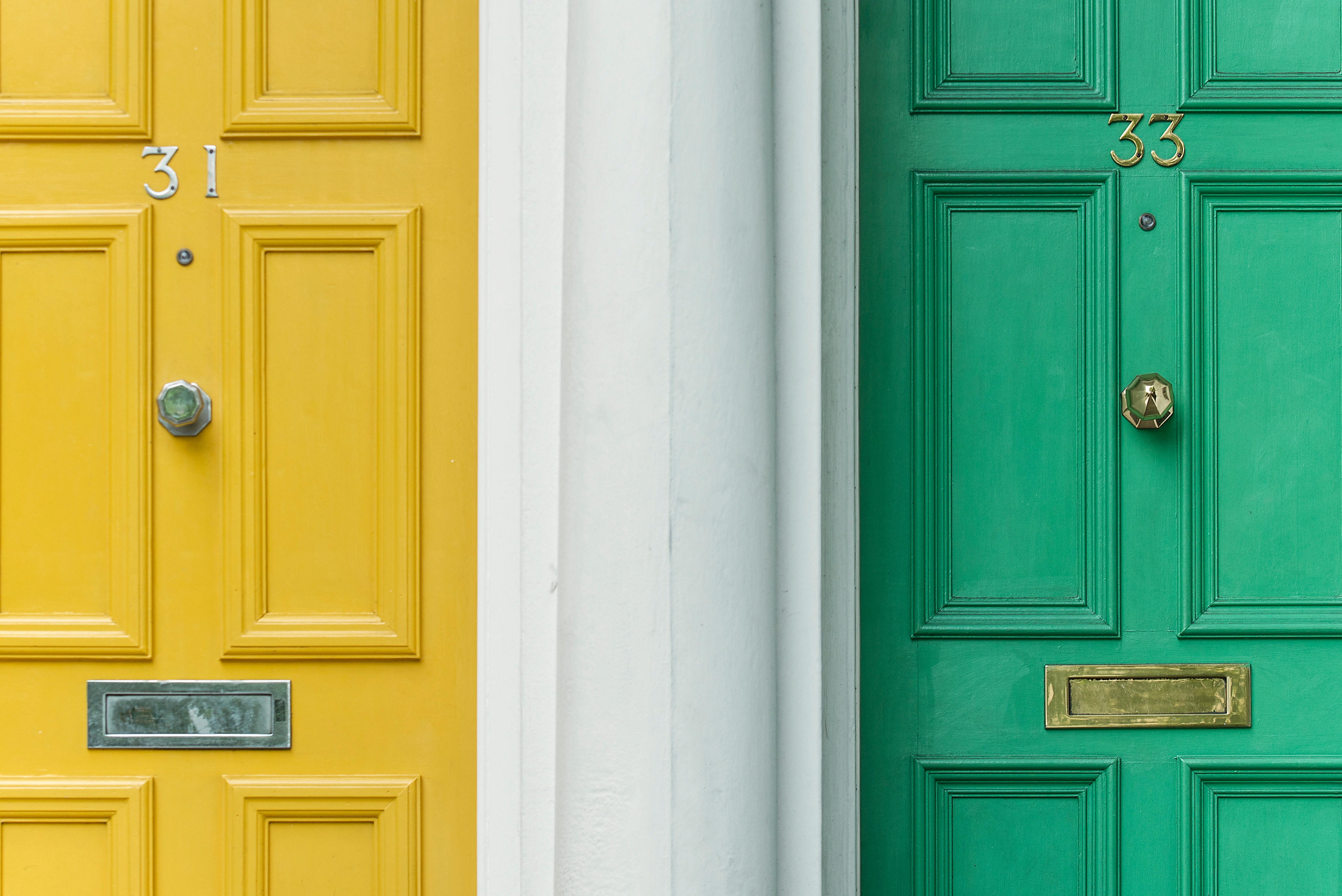
Doors are a crucial part of any home. They’ve vital from a security point of view, and they contribute enormously to the building’s overall energy efficiency. For the ones on the outside of your home, this is especially so – and consequently external doors tend to be far more rugged and heavy than their counterparts on the inside.
Selecting an external door is something that deserves careful consideration and research. Moreover, there are a number of problems and puzzling phenomena which might manifest during an external door’s lifespan. We’re often asked questions about external doors, and a few of them seem to come up time and again. Let’s consider some of the more common questions concerning external doors, and their answers.
One of the more peculiar phenomena exhibited by front doors is so-called ‘sweating’. This occurs when condensation forms on the outside of the door – because the door is colder than the surrounding air. It’s something that you’re more likely to see during wintry mornings – the glass will take a little longer than the surrounding air to heat up, causing airborne droplets of water to return to liquid form when they hit the surface of the door. Naturally, doors which are really good at insulating will tend to experience this more than those which aren’t, as the outside of the door will receive less heat from your interior.
If you find that condensation is forming on the inside of your door, then this would indicate excessive humidity inside your house. Check that you aren’t putting too much steam into the air from your bathroom or kitchen. If the problem is especially severe, you might find it worthwhile to invest in a dehumidifier or air-conditioner.

There are a few different reasons why a door might not be closing properly. Doors, and especially wooden ones, have a tendency to warp over time, and this warping effect might eventually cause the door to fall out of alignment with its frame.
To find out the cause of a problem, and fix it, you’ll need to observe the door itself. Close the door slowly and see whether the latch is properly lining up with the strike plate. If the two are not aligned, the door will not close.
Next, you’ll want to see whether the door’s locking mechanism is working. To do this, open the door and pull the handle (or twist the knob). If the latch comes in an out smoothly as expected, we can eliminate this as a cause. If it isn’t, you’ll need to replace the door handle; fortunately these are relatively inexpensive, and easy to install.
If the door is not hanging perfectly in line with the frame, then it may have ‘dropped’ slightly, thanks to gravity pulling it downward over time. This can be corrected by loosening the hinges, and the adjusting the door so that it aligns properly. Once you’ve gotten everything lined up again, tighten the screws.
If you’ve got a wooden door, you’ll be able to physically remove a small part of the outside of it. Wooden doors – even composite ones – will have a layer of wood running around the outside which is designed to be sanded and planed. This should be the last tool you use when making door adjustments, however, especially if you’re working in the summer. When the weather gets cold, the door will shrink a little bit, and if you’ve already cut the door down to size, the gap that forms around the edge might become considerable. A safer option would be to reduce any brush or foam-style weather-stripping around the outside with the help of a knife.
If it’s windy outside, and there’s a sufficient gap around the edge of your door, then there’s a chance that the air might get caught in the gap around the edge of the door, bouncing back and forth and producing a shrill whistling sound. If you’re trying to get some work done, then this might be just the sort of thing that’ll break your concentration. If you’re trying to settle down and relax, then you’ll have a similar problem.
Fortunately, there are many solutions to this problem. Firstly, you’ll want to try and plug the gap around the offending door. Self-adhesive draught-excluders can stick to the frame of the door, and keep any pesky gusts of wind at bay. On the other hand, you might consider an excluder that screws into place on the back of the door.
Whistling usually occurs in older properties – usually as a result of a wooden door warping, allowing the gaps around the edges to grow. Installing an excluder therefore won’t just help to keep a door quiet – it’ll also help to ensure the house is kept cold.
A squeaking door comes about as a result of excessive friction in the hinge. As the outside of the hinge slides around the outside of the pin, it will rub – generating a high-pitched squeaking sound.
Fortunately, this is a problem with a relatively simple fix. Get a can of WD40, or some similar lubricant, and apply it to the top of the hinge. It should work its way down through the entire mechanism, providing the lubrication necessary. Open and close the door a few times to allow the lubricant to work its way downward. In some cases, it might be necessary to disassemble the hinge itself and use wire wool to smoothen out the pin, or replace the hinge.
If your front door is leaking, then it’s likely that the outer seals aren’t all that they might be. First, try to determine that the door is indeed at fault, rather than some nearby flaw in the building. You can do this by waiting for a dry day and then squirting the edges of the door with a hose pipe. If you find that water leaks through, then your door isn’t water-tight.
Of course, it’s unlikely that the average rainstorm would expose your door to the same amount of water as a full-on blast from a hosepipe, so you’ll need to check that the sill is properly raised, and your door isn’t being drained on by a nearby roof or an overhead piece of guttering. Rusted nails, discoloured walls, and other giveaway signs will likely lead you to the real source of the problem.

Photo by Christian Stahl on Unsplash
The paint-job you apply to your external doors will have a huge effect on its efficacy, but also on its good-looks. For wooden doors, you’ll want to apply several coats of gloss paint for the most durable possible finish. Since external doors will have to put up with a great deal more punishment than internal ones, this is particularly important. You probably won’t want to go without an external door for days on end, and so you might wish to get a front door that’s already painted or otherwise finished.
Finishing your door yourself will allow you to put your own personal spin on things, but it’ll also mean that you have to either paint the door while it’s still in the doorway, which can lead to unpleasant drips and splatters if you’re not careful, or remove the door and lay it flat while you’re sanding, priming and finishing the wood. If you’re going down this route, be sure that you’ve gotten all of the finishing work done before you install the door.
Of course, a uPVC door doesn’t need to be finished, and so makes an attractive option for those looking for something cheap, durable and effective. That said, such doors can’t compete with their wooden counterparts when it comes to looks.
Check our guide to painting external doors for more information.
External doors have to do a lot of work when it comes to excluding draughts and keeping the warmth of your house locked inside. They’re consequently built more substantially than internal ones, with heavy-duty cores made from a combination of metal, wood and plastic.
If you’re looking to ensure the best possible insulation for your external door, you’ll want to ensure that it’s the best possible fit for the frame, and that and gaps around the edges have been plugged with brush-style draught excluders, or with foam or vinyl strips. Letterboxes are especially vulnerable to draughts, so be sure that you have such excluders built into yours. In order that you don’t compromise on looks to achieve the desired energy-efficiency, select excluders which match with the finish of the door itself.
In Conclusion...
External doors are a vital part of your property, and with a little bit of observation and maintenance, they’ll be able to insulate your home, and keep it secure, as effectively as possible. Be sure to keep an eye on your doors, and give them the attention they deserve!
